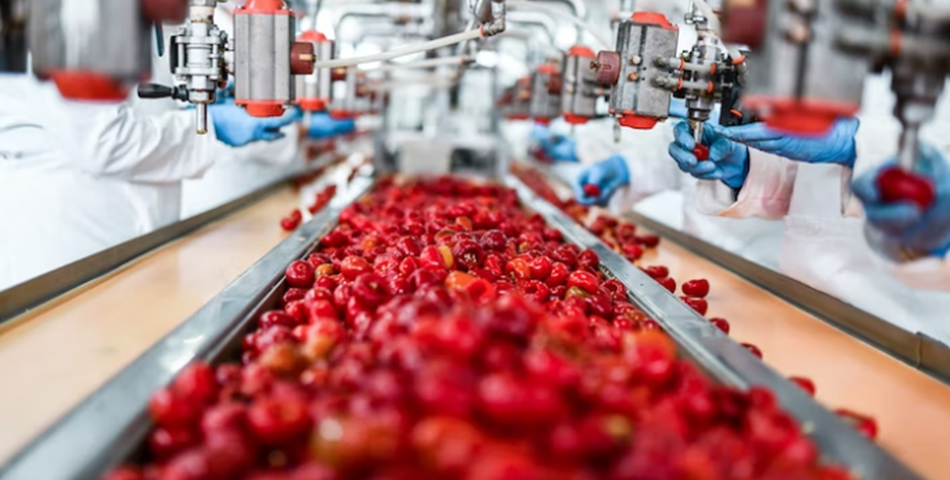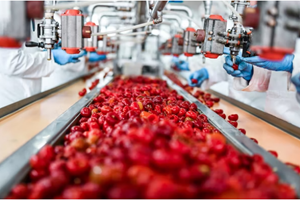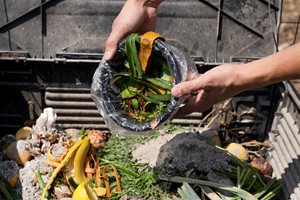The COVID pandemic continues to disrupt manufacturing operations of all types, creating supply chain delays and labor shortages. At the peak of the COVID crisis, entire countries remained closed, shutting off needed supply routes. When Vietnam shut down, for example, the industry suddenly experienced a shortage of rubber O rings.
While most countries are again operational, challenges remain for food manufacturers trying to procure the supplies and components they have relied on for years. Available supplies can vary as often as week-to-week, making it difficult for engineers and maintenance personnel to have confidence in the supply of materials they may access.
This has forced many manufacturers to quickly identify alternative materials that meet specifications that are similar to the original materials used. Although these products and materials may look similar to what was previously used, not all materials perform the same in all applications. The result can be compatibility issues.
These issues are complicated by the ongoing labor shortages. Record turnovers mean that product specifying is not always in the hands of people who fully understand material compatibility, the entire processing operation, and what materials are safe to use together.
Beyond Chemical Compatibility
Although chemical incompatibility is the most frequent issue, other problems can arise if a material is specified that can’t meet the pressure, temperature or flow requirements of that application. Other considerations include size, application, and media. In addition, the amount of contact time matters. A component may be able to withstand a caustic liquid that quickly flows over it but not if it has to be soaked in the liquid over time.
Extreme temperatures can sometimes cause otherwise compatible products to wear out prematurely. A brass fitting used outside in extreme temperatures, as an example, may experience cracking due to water expanding when freezing temperatures occur. Or pipe threads, which typically create a good seal, can loosen at higher temperatures.
Concerns over temperature are specifically rising in the beverage sector with more coffee and espresso machines operating at temperatures exceeding 300 degrees Fahrenheit. This is out of range for most plastics, which means more expensive brass or stainless steel may need to be considered. Additional challenges and risks arise when a combination of chemicals are used. Although each chemical may be compatible when used individually, different chemical reactions can occur when various chemicals are combined. It is difficult to find a specific combination listed on a compatibility chart, so spot testing may be required to ensure compatibility.
More recently, UV ratings have been questioned on plastic products, especially when products are being used outside, or if UV lamps are used as part of the sterilization process. UV exposure creates yet another category of compatibility issues.
Considering the Entire Product Life Cycle
Before considering an alternative material, it’s critical to fully understand how the product will be used throughout its entire life cycle, including processing, maintenance, cleaning and disposal.
A frequent problem occurs with cleaning chemistries. An icemaker, for example, may accidentally be cleaned with a strong acid that drips on the fittings, causing stress cracks that ultimately blow out the water line. Before specifying a cleaning product, a full analysis should be conducted of all products and components in which it may come into contact.
Chemical compatibility is a frequent problem in operations where caustic materials, such as iodine and peroxide, are used for washdowns. Ozone is also being used more often during the cleaning process because of its effectiveness in killing pathogens and algae. But it’s strength can also be a weakness as it can cause chemical compatibility issues with materials not designed to withstand that level of corrosiveness.
Cost and Performance
Cost is naturally a factor in component selection. Buyers eager to shave costs may be tempted to specify a less expensive material in lieu of stainless steel, especially if the stainless alternative has become difficult to reliably and consistently procure. But simply choosing a product that is less expensive could prove costly if it’s incompatible with a given application.
In contrast, some manufacturers unknowingly pay more than they need to by specifying a material that is more robust than what the application requires. Stainless steel, for example, is a highly reliable material that can stand up to the most aggressive chemicals. But if your application doesn’t require the robustness of stainless, you could safely substitute a less expensive option.
The Right Supplier
Make sure your supplier knows the application for which the product will be used. In addition, there is value in identifying a single source for your fittings and tubing because these must be compatible with each other. It’s equally valuable to have a supplier that offers a large variety of materials to avoid being sold a material simply because it’s all the supplier carries.
Make sure your supplier has a thorough understanding of compatibility issues with plastics, as well as metals. They both have their strengths and their limitations. Oil, for example, has compatibility issues with some plastics. That’s why grease lines create special challenges. Not just any hose material can be used. Metals, on the other hand, while more durable overall, may be susceptible to corrosion when used with caustic chemicals.
Most importantly, double check that your chosen supplier has a good understanding of all relevant regulatory requirements and restrictions and how they differ from one region to the next. Today there are products that are FDA-compliant and NSF-certified, for example. Certified costs more to procure, but you should first investigate what is required for your application.
Requirements in Europe under the REACH standard are even tougher, so it’s important to consider more than just FDA or NSF standards if you’re selling internationally.
Material compatibility is of critical importance as it can create premature product failures and, in some cases, safety hazards. Don’t assume that a similar product will work without asking questions and considering the entire life cycle of the product. If you’re forced to swap out due to supply issues, be sure what you’re getting.
By Michael Nick & David Van Eerden














